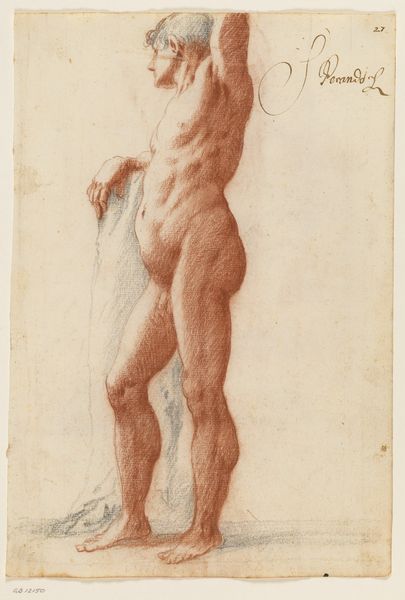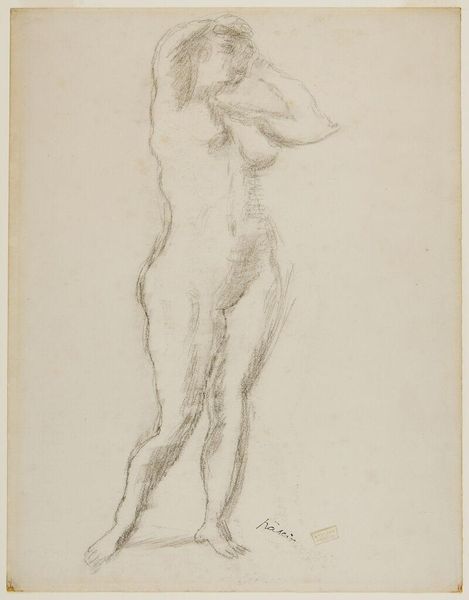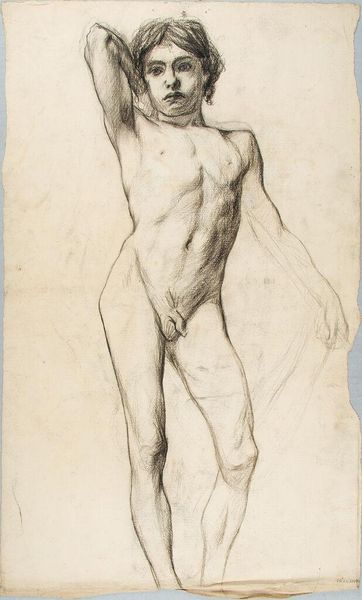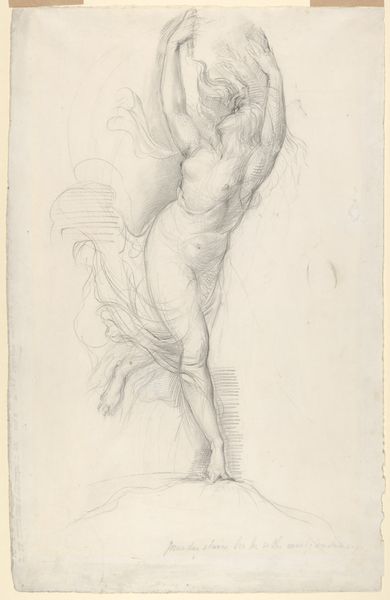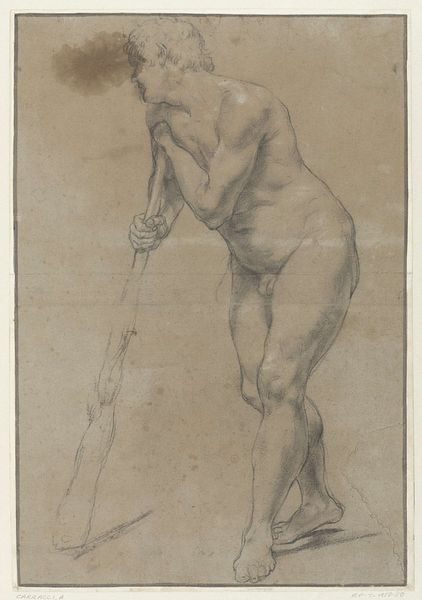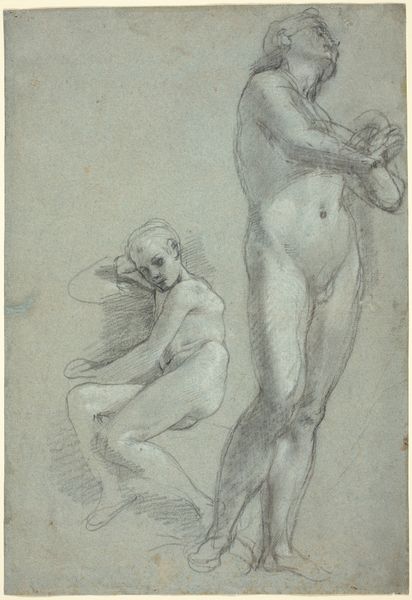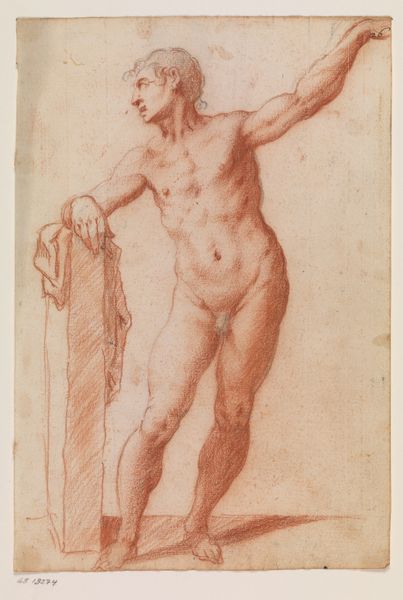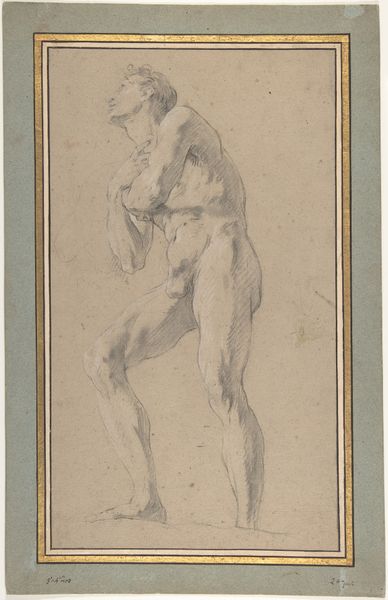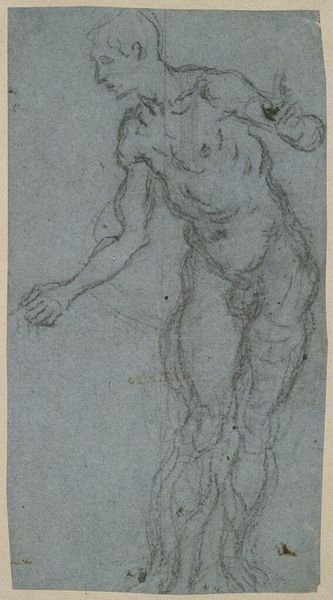
Copyright: Public Domain: Artvee
Curator: This is "Studie zum ‘Orpheus’," a drawing by Franz von Stuck, created around 1891, rendered in colored pencil. Editor: My immediate reaction is one of stark anatomical curiosity, though tinged with vulnerability. The almost unfinished quality, coupled with the depiction of flayed muscle, evokes mortality. Curator: Von Stuck was working within a period defined by both academic art and symbolism, and that tension plays out here. On one hand, it reflects a commitment to anatomical accuracy, essential to the art academies of the late 19th century. But the subject itself—Orpheus, a figure steeped in myth—pushes it into the realm of Symbolism. The figure is in contemplation holding some kind of panel in front of him and is in dialogue with his other-self in the musculature rendering, representing Orpheus' inner life. Editor: The tension you mention is really interesting. Seeing Orpheus, divested of skin, confronted by what appears to be a blank writing tablet invites reflection on inner struggles. Could this reveal the human experience, stripping away the familiar and exposing the hidden systems within us all. Is this maybe a play with gender or social class given that this kind of inner struggle is generally not discussed within bourgeois and patriarchal European societies at the time? Curator: I agree. Consider how museums often sanitize historical art. To me, Von Stuck presents Orpheus' myth with a stark realism, revealing not only the man, but also a deep insight of masculinity that allows to showcase the psychological and philosophical landscape within. What about you, is the role of social change clear? Editor: Absolutely, placing Orpheus, often romanticized, into this setting really shakes traditional perspectives. And the unfinished feel of the study adds another layer; we are witness to an intimate, exploratory moment rather than the glorification. So Von Stuck’s image serves as an invitation to think about power structures and narratives that underpin both classical myths and contemporary societal experiences. Curator: I concur. Viewing "Studie zum ‘Orpheus’" provides insights into how 19th-century artists interrogated masculinity, narrative, and the societal undercurrents within familiar myths. Editor: Exactly. I will definitely be thinking about how our cultural narratives define personal understandings going forward.
Comments
No comments
Be the first to comment and join the conversation on the ultimate creative platform.
